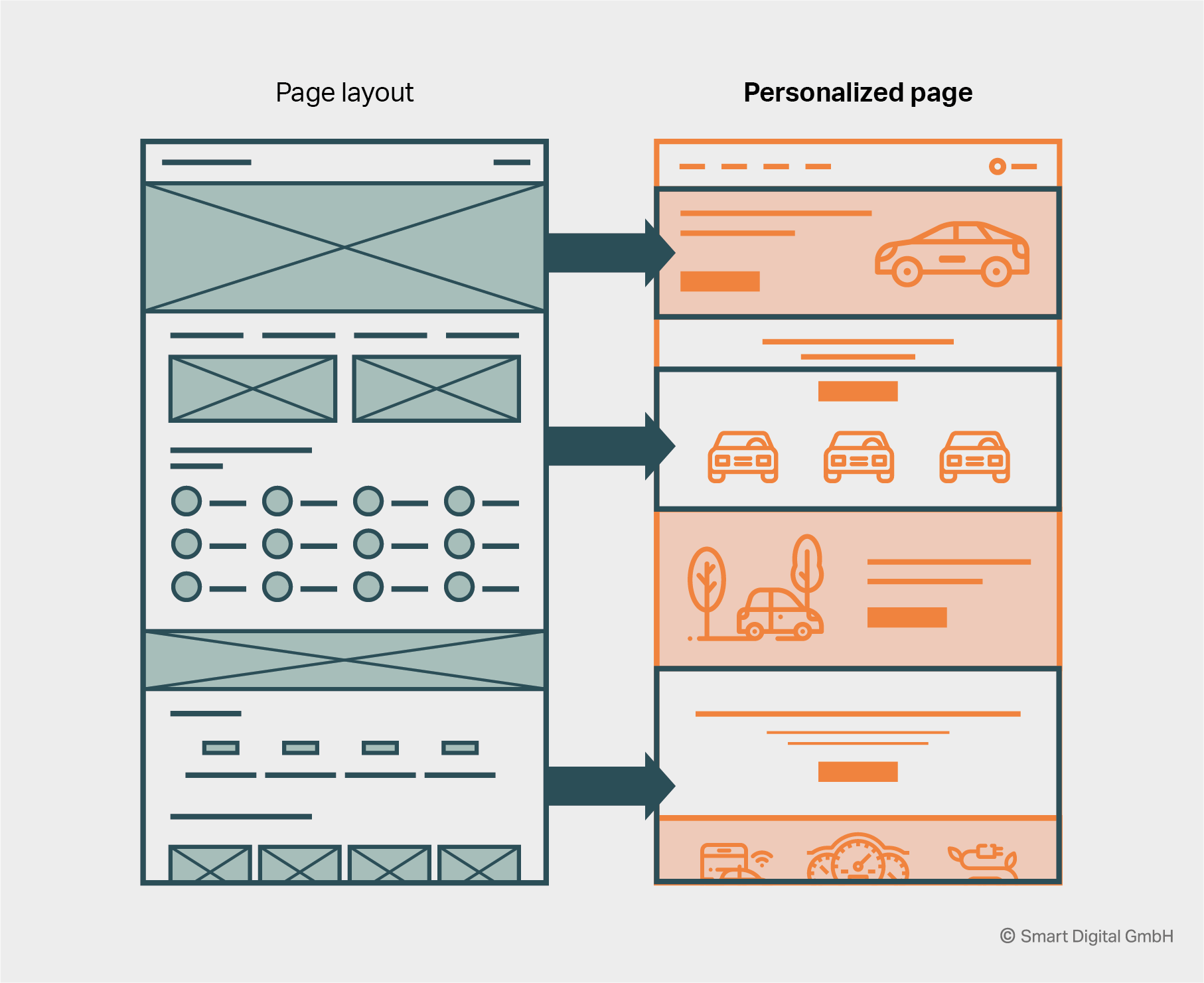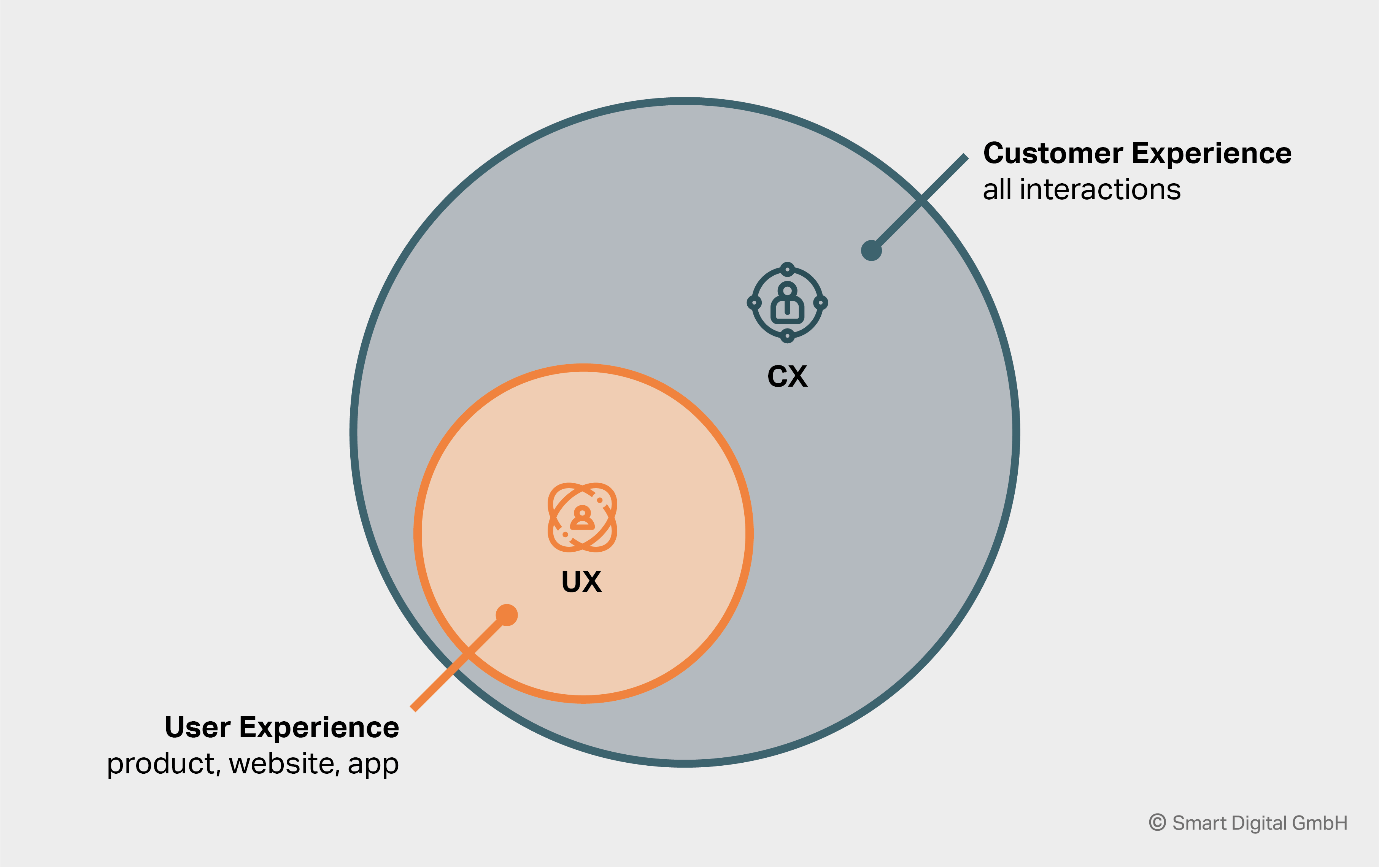It is a common observation that we are in the middle of a significant change in the interaction between companies and their customers. Customers are gaining more value and influence, and User Experience and Customer Experience are becoming increasingly important for companies to succeed.
Many companies are looking for ways to create a positive experience for every user on their digital touchpoints. This post gives recommendations and provides you with three key takeaways:
- What customer and user experience are and how they influence each other
- Why companies should actively manage the user experience on every individual user level
- How real-time personalization helps companies to optimize the user’s experience
1. What are User Experience and Customer Experience and how do they influence each other
Customer Experience (CX) describes the conscious and subconscious perception a customer gains when interacting with your company.
This includes your products as core deliverables, but it also spans out to the perception of your brand, pricing, communication, servicing, etc.
An experience affects one or multiple dimensions for the customer:
- Sensory – how sensory organs of the customer are stimulated
- Affective – how the customer feels about something
- Cognitive – how the customer thinks about something
- Behavior – impacts the behavior of the customer
- Lifestyle – relates to the values and opinion of the customer
- Social – targets the social interaction of the customer with his environment
Customers’ purchase decisions are not only based on what they buy, but also why and from whom they make the purchase. Thus, for companies it’s essential to create a holistic, positive customer experience.
User Experience (UX) is part of CX and describes the experience a user has during the interaction with a product or service. UX is perceived on all your offerings – the paid ones you want to sell, as well as, the unpaid ones that you build to support the customer through the journey, like your website, apps, digital services and other digital touchpoints.
Every user experience made by the customer and every element of these experiences contribute to the overall customer experience, positive and negative ones in the same way.
An example: You are interacting with a website of a railroad company and want to book a train ride between cities. After your selection is done and you want to book, you might need to log in or change some settings. You return to the selection window of the destinations and find, that your previous selection has vanished. Dear reader, I am sure you will recognize this example.
As a user, you will automatically associate this bad user experience with the company’s name and quality in general, even though the core deliverable may be excellent.
2. Why user experience must be managed on an individual level
In today’s practice, many companies use a customer lifecycle management and user journey approach to optimize the user experiences across their touchpoints. But this approach is misleading.
A customer lifecycle management approach splits the behavior of customers into distinct phases of a sales funnel, from awareness via purchasing to loyalty and advocacy. The user experience is then linked to each phase, trying to design an optimized experience per phase and leading the customer along the “ideal” journey.
“Users don’t adhere to theoretical journeys. They create their own and individual journey.”
However, users normally don’t adhere to theoretical journeys or their customer lifecycle. Users create their own and completely individual journey, jumping back and forth between different touchpoints and topics, with very own and individual habits in their behavior.
Therefore, only a fully individualized user experience can help to exploit the potential of your customers. Putting the user in the center of your UX design will help create the best user experience. In other words: Personalization is needed, and it has a tremendous and positive influence on UX and therefore CX.
3. The role of real-time personalization for an exceptional user experience
Now, what makes a good user experience for the individual user? Simply put, to deliver a good user experience you need to anticipate or predict the user’s wants while he is connecting with your touchpoints. Which brings us to the fun part of this article:
Let’s assume, a company knows for each user at any given moment what he really wants. This is challenging, but it is a prerequisite to change marketing from being just descriptive to being predictive.
With the complete user information available in real-time, the next step is to deliver the individualized and optimized experiences. Delivering this with static websites or applications is no longer an option. The user will have bad experiences as he is not presented the right content or product at the right time.
Companies must engage the user with the information he needs, and this can only be achieved with personalization in real-time. It makes digital touchpoints relevant, easy to use and time saving for the user.
To demonstrate the potential of real-time personalization, look at the below example:
Through coordinating tracking, tag management and predictive algorithms with front-end architecture and existing content, we can provide each user with a specific presentation of the right content, in real-time. Using this schema improves engagement rates by up to 300% and click through rates by more than 30%.

Optimized and individualized user experiences in real-time improve engagement rates by 300%
But personalization is more than technology, data science and processes, personalization needs to be integrated as a strategic pillar in the organization, spanning across all relevant departments. This new mindset combined with state-of-the-art concepts and technologies – from tracking, through artificial intelligence to true real-time capable decision engines – enables companies to personalize the user experience in real-time.
Your Key Takeaway
When we talk about optimized UX and CX, we need to consider real-time personalization as a core backbone of it. Only if we treat each user as an individual and are heads up with his needs in every moment, then he will interact with us, enabling us to deliver a relevant and successful UX.
The concept of user journey or customer lifecycle approaches does not reflect the reality. It is a relic from the earlier area of marketing automation and good for visualization idealized user journeys. However, it is not reflecting real user behavior.
Photo: davisco| Unsplash


